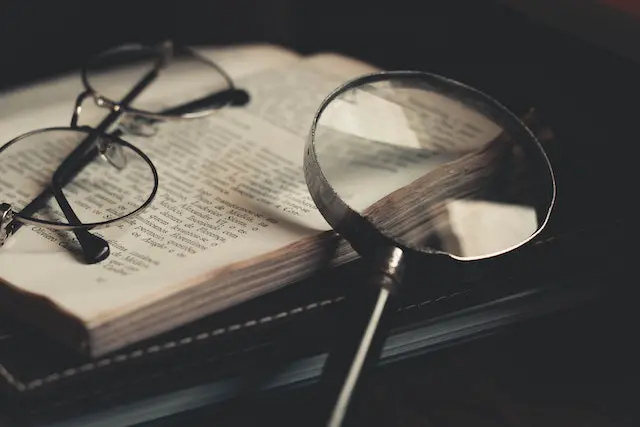
How to Get a Copy of Discovery | 7 Simple Steps by Expert
The contents of this web page are for informational and educational purposes only, and nothing you read is intended to be legal advice. Please review our disclaimer before taking action based upon anything you read or see.
Any legal proceeding must include the discovery phase. It entails sharing information, including papers, proof, and witness testimonies, amongst the parties concerned. The goal of discovery is to offer each side the details they need to make a compelling argument and guarantee a fair trial.
But getting a copy of your finding might be a difficult and drawn-out procedure. This is true, particularly if you are still trying to figure out what to do or have lost communication with your lawyer. In this post, we will look at every step necessary to get a copy of your discovery. Come along.
How to Get a Copy of Discovery?

You can get a copy of your discovery through the following steps:
- Contact your attorney
- Request a copy of your discovery from your attorney
- Review your discovery documents carefully
- Take notes and highlight important information
- Discuss any concerns with your attorney
- Prepare for any depositions or trial testimony
- Keep a copy of your discovery for future reference
Here is a comprehensive highlight:
Step 1: Contact your attorney
The first step is to contact your lawyer if you are a party to a judicial process and have yet to get a copy of your discovery. They can give you a copy, review the information, and then clarify how it can affect your case. They need to offer a time frame for when you anticipate getting it.
Step 2: Request a copy of your discovery from your attorney
You may need to submit a formal request if your lawyer cannot or unwillingly hand you a copy of your discovery. This may be performed through writing, and it should include a thorough justification for your need for the discovery and a list of the precise documents you want.
It’s crucial to take into account a few criteria before requesting discovery from your lawyer:
Client-Attorney Relationship: When asking for discovery, your attorney-client relationship is highly important. Your lawyer can be less eager to assist you if you don’t get along well with them.
Date of Request: Given that it may take some time to compile all the required papers, making your discovery request as soon as possible is crucial. If you delay until the final minute, you may not have access to crucial evidence.
State-specific laws and ordinances: Finally, it’s critical to understand the unique laws and guidelines your state has in place for discovery. What is necessary in your specific situation should be explained to you by your lawyer.
Step 3: Review your discovery documents carefully
Once you get a copy of your discovery papers, it is crucial to read them carefully to comprehend the arguments and supporting data fully. Here are some pointers to help you efficiently examine your discovery materials:
Allocate Enough Time for Analysis: Analyzing your discovery materials might take many hours or even days, depending on your case’s complexity. Ensure you provide enough time for a comprehensive examination of the materials, pausing as necessary to prevent fatigue.
Get Your Documents in Order: It is an excellent plan to arrange your discovery papers so they are simple to explore before studying. This might be writing a summary or outline of the main points. This is in addition to underlining crucial portions or making a spreadsheet to keep track of significant information.
Step 4: Take notes and highlight important information
It’s important to make thorough notes when reading your exploration materials and underline important details. This may aid in your ability to comprehend the case’s specifics, recognize key pieces of evidence, and be ready for any upcoming court cases. Here are some pointers for taking notes and underlining data:
Use a Consistent System for Note-Taking: Use a standardized approach for taking notes to reduce confusion and simplify evaluating your notes afterward. Arranging your notes by subject, utilizing bullet points or numbers to denote crucial information, and using clear, short language are a few examples of how to do this.
Highlight Only Key Information: Focusing on essential elements that could be pertinent to your case is vital when it pertains to emphasizing material in your discovery papers. This might contain significant dates or times, witness testimonies, or other vital information. Only highlight a little since doing so might make it hard to tell what information is important.
Color-Code Your Notes and Highlights for Clarity: Consider using color coding to further clarify your highlights and comments. This might include designating various colors for certain sorts of material, such as important evidence or holes in the case put up by the opposition. This may simplify utilizing details during legal procedures and help you rapidly recognize crucial information.
Step 5: Discuss any concerns with your attorney
It would help if you went through any worries or inquiries regarding the discovery process with your lawyer. This entails being aware of the material provided, how it can affect your case, and the actions you can take to resolve any possible problems.
Your lawyer may assist you in resolving any difficulties you may have with the discovery. This may include negotiating the extent of the material disclosed, requesting a protection order, or submitting a move to exclude specific proof from the trial. To ensure that your issues are clear and in view, engaging closely with your lawyer is crucial.
Step 6: Prepare for any depositions or trial testimony
Study your discovery materials and any relevant rules of procedures if a deposition has been set for you to ensure you are familiar with the process. Ensure that you are prepared for the deposition and are aware of the possible inquiries. To get familiar with the procedure, think about practicing with your lawyer or taking a simulated deposition.
If you want to testify in a trial:
- Prepare and practice your testimony beforehand.
- Review your discovery materials, affidavits, witness statements, and pertinent exhibits.
- Work with your lawyer to determine the most important points you’d like to make and any possible areas where your testimony needs to be clarified.
Step 7: Keep a copy of your discovery for future reference
After receiving your finding, saving a duplicate of everything for your records is crucial. A duplicate of your finding enables you to examine and comprehend the details. Additionally, it guarantees that you have a link to the information in case you need to consult it again during a trial, depositing, or other procedure.
Preserve your discovery materials in a place that is both secure and safe. If you have a hard copy, keep it in a secured file cabinet to keep it safe. If you possess a digital copy, ensure it is encrypted and placed on a safe platform.
My Opinion
You can get a copy of your discovery through the tips above. Finding Key Players and Evidence is also essential. As you review your discovery materials, try to identify the case’s major participants. Along with the most important evidence, this should also contain any witnesses, specialists, and other pertinent parties. This will assist you in creating a comprehensive understanding of the arguments’ advantages and disadvantages and possible rebuttal tactics.
References
- Federal Rules of Criminal Procedure; Discovery and Inspection: https://www.law.cornell.edu/rules/frcrmp/rule_16
- Schwarzer, William W; The Federal Rules, the Adversary Process, and Discovery Reform: https://heinonline.org/HOL/LandingPage?handle=hein.journals/upitt50&div=24&id=&page=

I’m a driven and accomplished law graduate and post-graduate, passionate about sharing my legal expertise via my blog. I hold a Bachelor’s degree in Law from the University of London (UK) and a Master’s in Law from the University of Derby (UK). Both gave me the foundational knowledge and skills to excel in my chosen career path.
Throughout my academic journey, I have gained extensive knowledge in various fields of Law, including Corporate and Business Law in the USA, Criminal Law, International Law, US Copyright law, and most importantly, American Constitutional law.


Comments are closed.